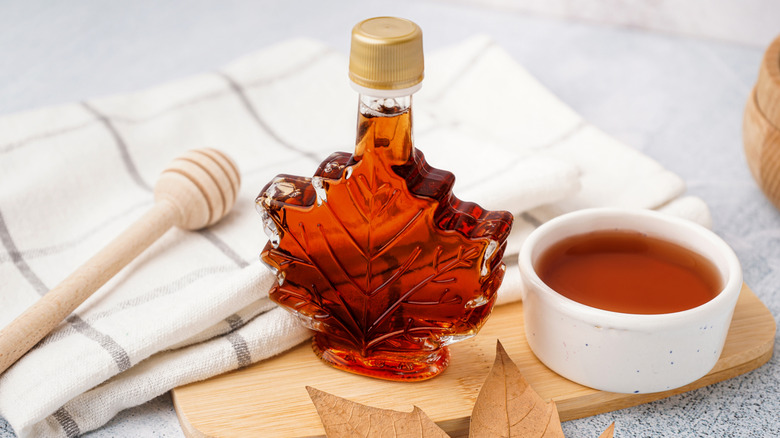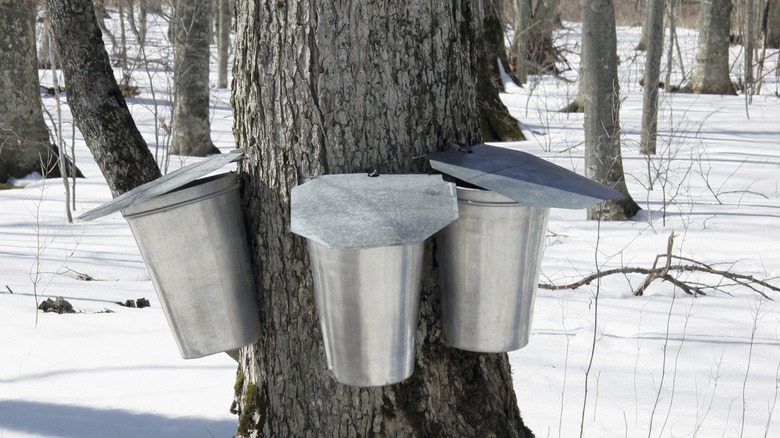It's Sap Harvesting Time — So How Do They Turn It Into Maple Syrup?
North Americans know that when the days grow warmer and the evenings stay cold, it's maple syrup time. While technically available year-round, maple syrup is harvested primarily in Canada and the Northernmost United States between February and April, though there's no exact timeframe and farmers tend to use their best judgment. Maple syrup only comes from two specific maple trees, the black maple and the sugar maple, so farmers will cultivate dozens in their sugarbush to yield the best results.
Harvesting maple syrup from a maple tree begins with collecting sap, which requires certain weather conditions. Cold nights and warm days mean the sap is soft and flowing and ideal for collection. Farmers will carefully drill holes into appropriately sized maple trees to insert a metal spout known as a "spile" that will connect to either a large bucket or a plastic tube system. As the sap flows from the spile, it accumulates in the bucket or travels through the tubing system until it's eventually collected in a larger storage tank. The collection season only lasts for 4-6 weeks, but in that period each hole on a maple tree will produce about 10 gallons of sap, which processes down to about one quart of maple syrup – hence why it can be pricey.
From bucket to bottle: How does sap become maple syrup?
Once a sugarmaker has collected enough sap (or the season ends), the tanks are transported to the sugarhouse. When it arrives at the sugarhouse, the maple sap is primarily water with a very small sugar content. To become the maple syrup we all know and love, it undergoes an intense evaporation process with a piece of equipment known as an "evaporator," which refines the sap little by little until we're left with a very concentrated boiling sap that begins to model maple syrup. As the liquid turns golden brown, and the concoction reaches a precise density, the sugarmaker will remove the syrup from the heat, filter it, and prepare it for bottling.
Similar to beef or butter grading, maple syrup receives a grade on a scale of A to C based on its color and taste. The maple syrup is either packaged into bottles at the same facility where it's harvested or sold to brands that do the bottling and selling separately. Don't worry about those maple trees. Farmers spend generations perfecting their craft and there are regulations in place to prevent overharvesting. Keep your eyes out for real bottles of maple syrup at the grocery store, and if the weather cooperates, you may even get to demo your own Vermont-style maple-syrup-on-snow treat.

